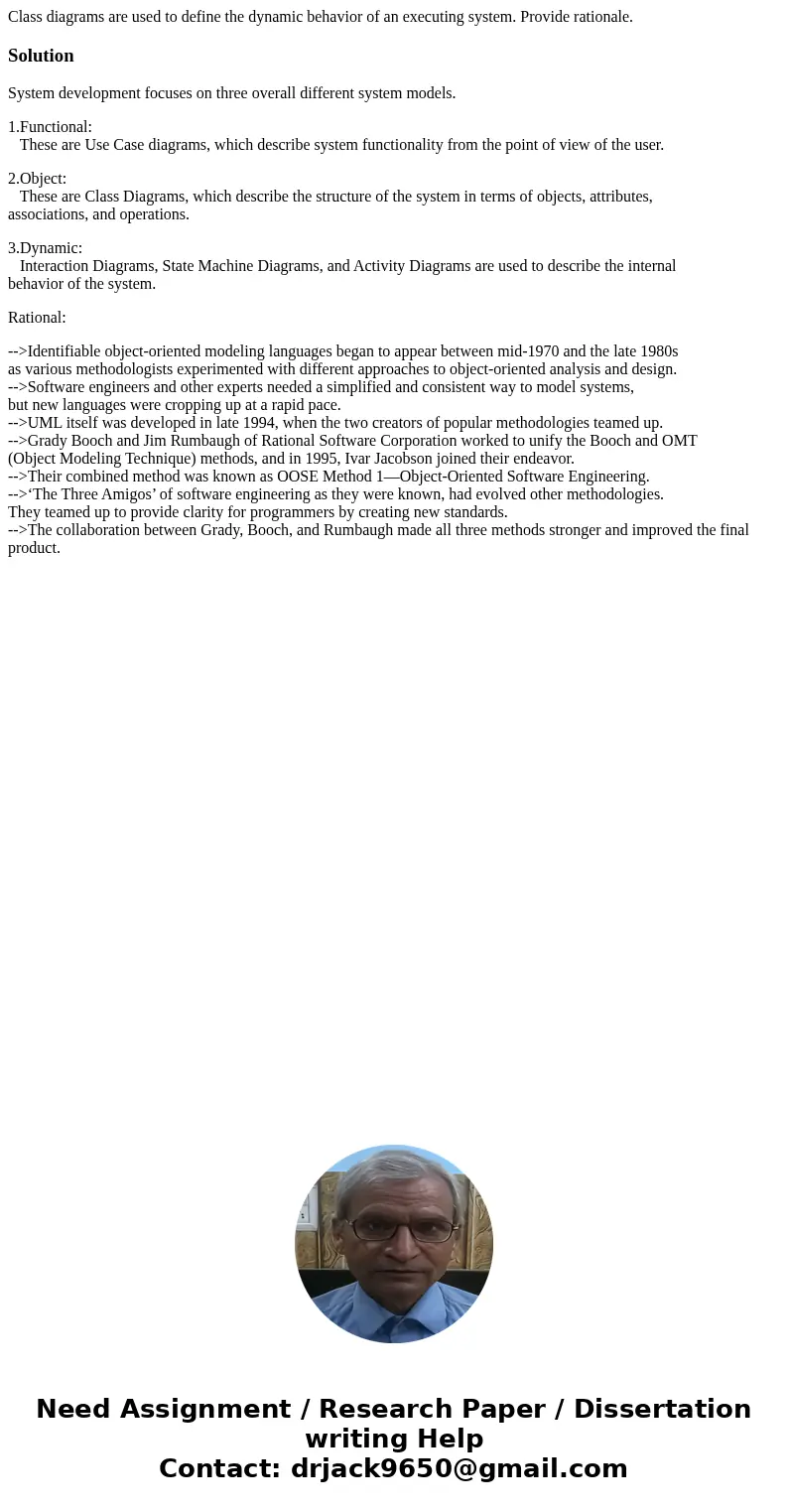Class diagrams are used to define the dynamic behavior of an
Class diagrams are used to define the dynamic behavior of an executing system. Provide rationale.
Solution
System development focuses on three overall different system models.
1.Functional:
These are Use Case diagrams, which describe system functionality from the point of view of the user.
2.Object:
These are Class Diagrams, which describe the structure of the system in terms of objects, attributes,
associations, and operations.
3.Dynamic:
Interaction Diagrams, State Machine Diagrams, and Activity Diagrams are used to describe the internal
behavior of the system.
Rational:
-->Identifiable object-oriented modeling languages began to appear between mid-1970 and the late 1980s
as various methodologists experimented with different approaches to object-oriented analysis and design.
-->Software engineers and other experts needed a simplified and consistent way to model systems,
but new languages were cropping up at a rapid pace.
-->UML itself was developed in late 1994, when the two creators of popular methodologies teamed up.
-->Grady Booch and Jim Rumbaugh of Rational Software Corporation worked to unify the Booch and OMT
(Object Modeling Technique) methods, and in 1995, Ivar Jacobson joined their endeavor.
-->Their combined method was known as OOSE Method 1—Object-Oriented Software Engineering.
-->‘The Three Amigos’ of software engineering as they were known, had evolved other methodologies.
They teamed up to provide clarity for programmers by creating new standards.
-->The collaboration between Grady, Booch, and Rumbaugh made all three methods stronger and improved the final product.

 Homework Sourse
Homework Sourse